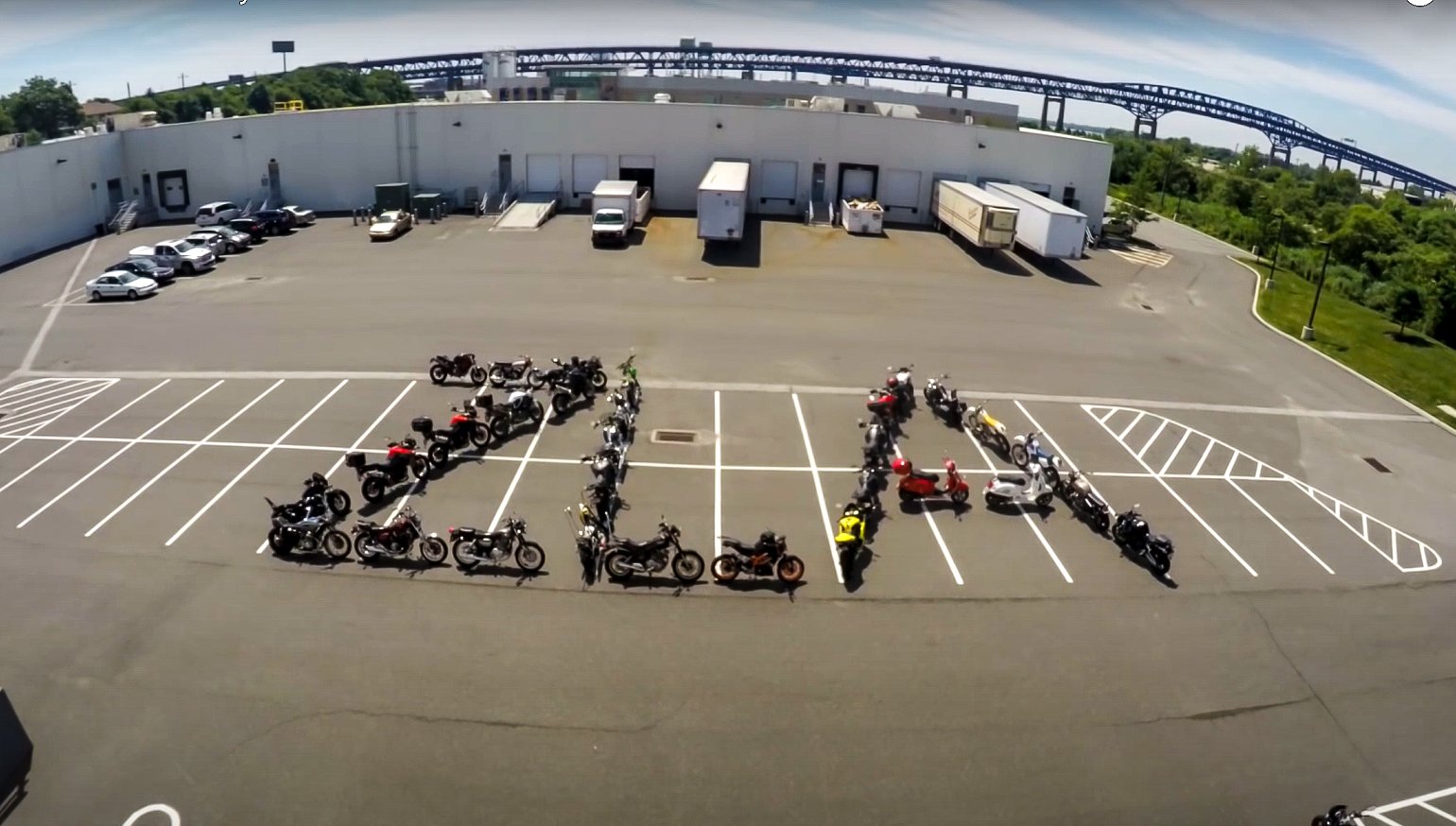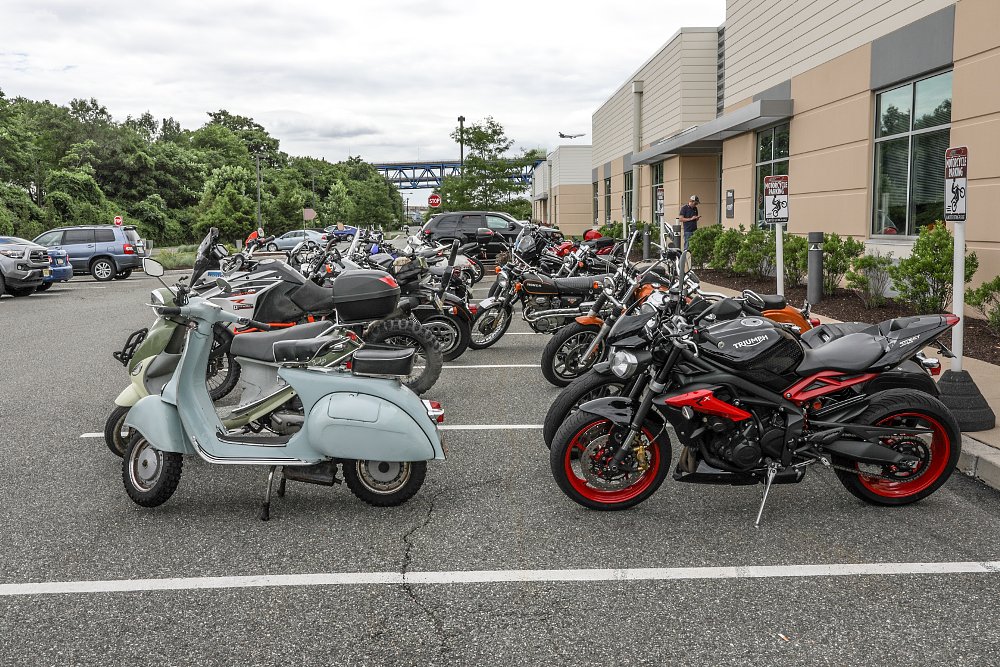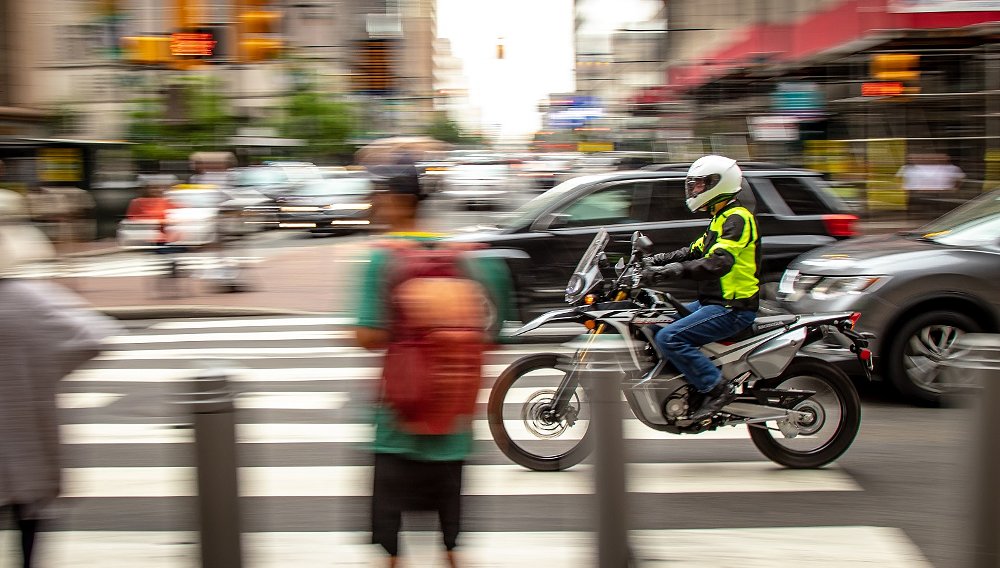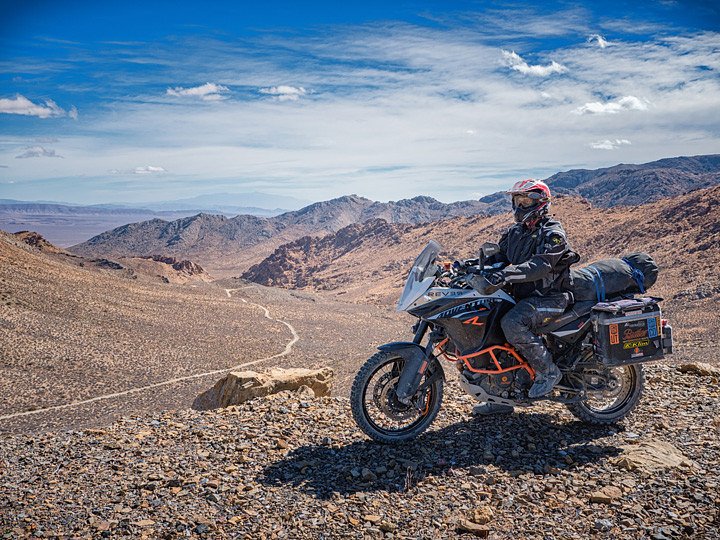This is the 30th year of Ride to Work Day, and like so many other things in the last year and a half, the simple act of riding to work has changed.
In any other year, we’d expect the RevZilla motorcycle parking lot to be packed with bikes on Monday, but our workplace has changed like countless others. But whether you travel to work each day or you work from home with no commute at all, you can still participate. Ride to Work’s founder and organizer, Andy Goldfine (you might also know him as the man behind Aerostich) wants riders to know that this event always stood for more than just commuting. We asked him a few questions as he prepares for another year of Ride to Work Day.
Common Tread: 2021 marks the 30th anniversary of Ride to Work Day. That’s a huge achievement for you and your organization. Which moments from that journey stand out the most to you?
Andy Goldfine: For me, it was the very first discovery of the credo that is on all the Ride to Work stickers and propaganda materials: Ride to work, work to ride. It started as a parody of Harley-Davidson’s “Live to ride, ride to live” credo. I saw it on a bike at Brainerd International Raceway in northern Minnesota 30 years ago or so. In the infield, among the several thousand spectator motorcycles, was an older Honda CB motorcycle that had been cafe’d. And on the side of the gas tank was painted “ride to work, work to ride.” I really wanted to use this in marketing for Aerostich, because it spoke truth to my life as a rider. And I was very excited. I think I gave him a fleece Aerostich jacket or something. I asked him if the phrase has originated with him, and he said, “Oh, no, I saw it somewhere else, but I don’t see why you couldn’t use it,” so then we made stickers, and T-shirts, and used it for marketing.

Fred Rau, who was the editor at the time of a magazine called Road Rider, called me and wanted to know if it was OK to use the shirts as a prizes as part of an editorial calling for a Ride to Work Day. So I sent him some shirts to give to his readers, and that’s how Ride to Work Day started.
What stands out to me is that first moment of discovery of an important truth about riding. It stripped away all the hubris, and nonsense in some ways, that surrounds motorcycling in the United States. In that moment — I can take you to the spot, I remember it perfectly, it was very exciting — sometimes you have a lightbulb go off, you get that spur of adrenaline, and say, “Yes, this is right!” It became the Ride to Work Day effort, the centerpiece of the program, and everything followed.
CT: Is Ride to Work Day the world’s largest motorcycle event by number of participants?
AG: That’s unknown. Ride to Work Day is a self-directed program. There’s no ground site, no membership dues or anything like that. So we don’t know for sure.
Yesterday [at the time of this interview] was Flag Day in the United States. I did see a few more flags out, sure, but not as many as one sees on July 4th. It's up to people to participate and give the day meaning. Years ago, the way we established that it was the biggest event by number of participants was by comparing numbers of riders on an average weekday to our day. We used to have people go up on freeway overpasses and actually count motorcycles for an hour. We saw more on Ride to Work Day, then tried to extrapolate what the overall totals might look like. We heard from riders in other countries, too. It’s just a guess that we are the largest. Like Flag Day, it’s hard to say.
CT: The last year and a half brought drastic changes to commuting and our workplaces. How has this affected riding to work?
AG: That’s a huge question. COVID-19 has sped up trends which were already happening. It’s well known that technology influences culture, always has, from long before the industrial revolution. The trends of artificial intelligence and the digital revolution, those changes are gigantic. I was just reading that in 2022, Amazon is expected to become a larger retail company than Walmart. That’s a huge deal. RevZilla is an internet company, too, and I think you’ll continue growing. The virus sped up these changes in workplaces.
The trends were already happening, but because of the pandemic, people altered their lifestyles, and some of them liked the changes in their lives. They didn’t particularly like wearing masks, for example, but they did like working from home. They also realized that when you have algorithms loading delivery trucks, it reduces the amount of cars out on the road running around with people shopping for stuff. It has probably reduced the amount of energy spent. These are good things for motorcycling.
On the other hand, there are some negatives about these gigantic cultural changes. Many books have been written, and many more will be written, about the big questions of transportation. I think that, ultimately, recent changes will result in more motorcycles being ridden for useful purposes, as well as pleasure. Motorcycles are here to stay. They’re a wonderful, elegant, and efficient form of mobility that also happens to be tremendous fun. Win-win-win.
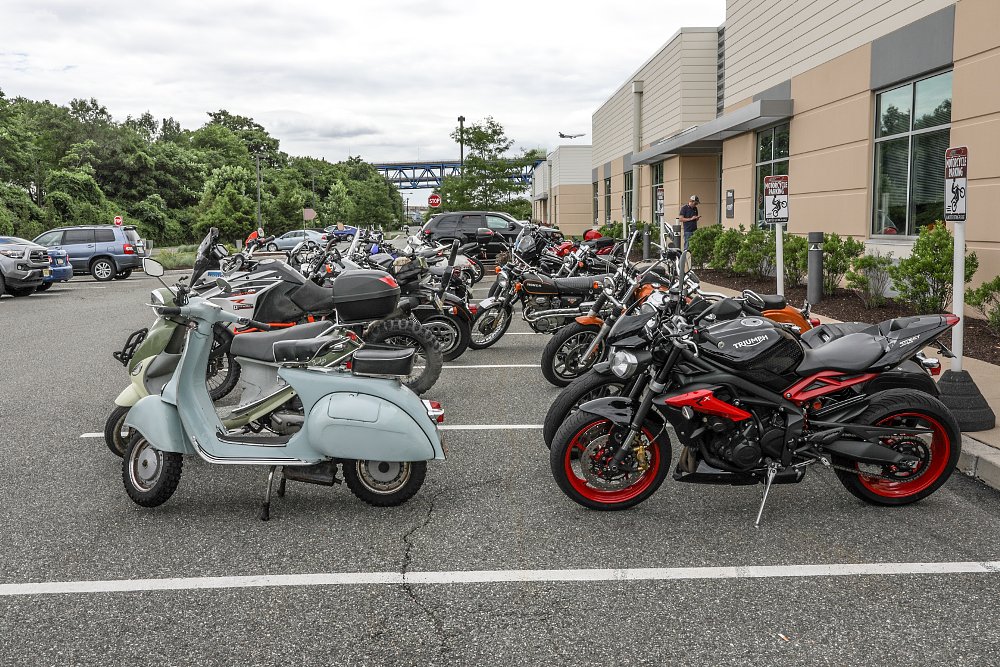
CT: Ride to Work Day’s mission is “advocating and supporting the use of motorcycles and scooters for transportation, and providing information about everyday utility riding to the public.” Even if a rider works from home, they’re supporting the mission of Ride to Work Day by increasing visibility of motorcycles if they ride on Monday, right?
AG: We want them to do it, for sure. It doesn’t matter if they’re working from home, or retired, or anything else. If you’re not commuting on your bike that day to a jobsite, and you’re a motorcyclist, go out and get an ice cream cone on your bike. Go to the grocery store, get a bagel, whatever. Just be on your bike that day and you’ll show the public that motorcycles are more than just toys, and more than just a sport vehicle.
CT: Participating in Ride to Work Day is a good step forward for motorcycle visibility and activism, as well as a display of solidarity. What next step(s) would you like to see participants take to improve motorcycling?
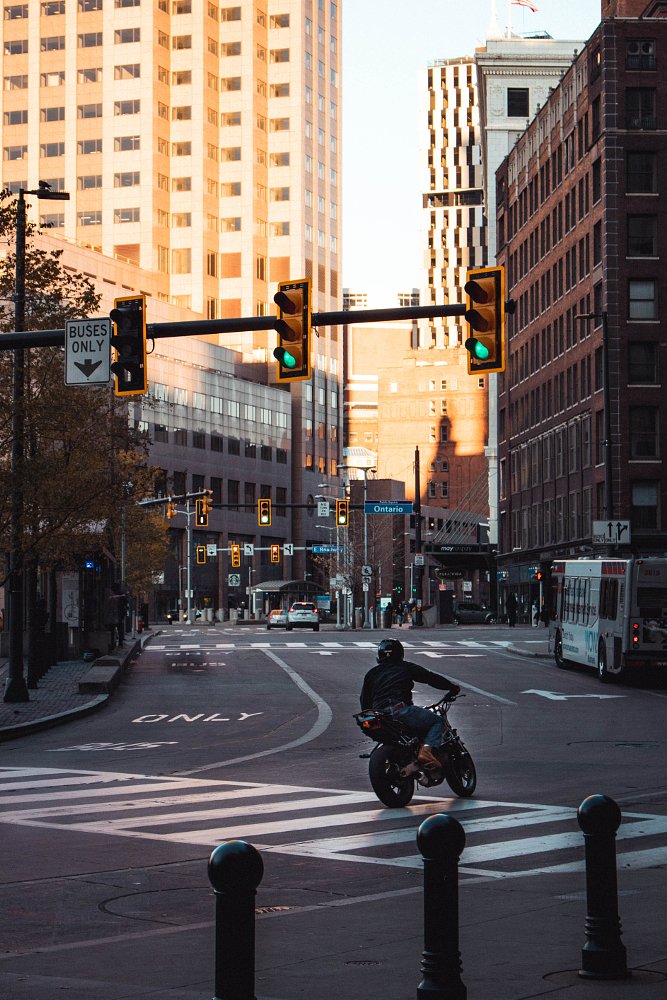
AG: All the usual stuff. Start with using motorcycles for general transportation, not just recreation. Being that we riders are the minority among road users, owning the fact that you’re a rider is a big step. Carry your helmet with you when you go into a store while wearing your gear. Too many people think we’re thrill seekers, or that we’re idiots, or that we have a death wish. We’re none of those things, so it’s important to me, personally, to wear protective gear on hot days, even though I’m uncomfortable. It’s tempting, on those days, to just ride with a T-shirt, no helmet, and gym shoes, but you’ll look like an irresponsible jerk to everyone who sees you riding this way. If you do crash, or are involved in an accident scenario, you’re probably going to make it worse.
I am very happy being a rider who wears gear. My everyday transportation is an old Honda dual-sport modified in a supermotard style with a larger gas tank and a stock muffler. Riding is fun no matter how one is dressed, or what one rides, but when you’re in public areas, you represent all motorcyclists. Being advocates for motorcycling — in ways that are not directly offensive to those who don’t ride — is support. At venues where there are lots of people, things like burnouts, loud pipes, and hooligan riding are bad for all motorcycling.
Riding is good for riders and the rest of society. It relieves congestion, creates more parking spaces, reduces energy footprint, reduces wear and tear on the roads, promotes better physical health… There are so many benefits. One of my personal things about this, and I’ll close on this, is lane splitting and filtering. It’s one of the best ways to incentivize riding. All over the world, except for 47 of the United States, it’s the natural, normal behavior of riders to filter and split in congested traffic. Doesn’t matter if you’re in England or India, that’s something motorcycles do really well. But the United States has a different history, where we went right to cars with our Model Ts and other cheap, mass-production cars. Work to help state legislators understand that lane splitting and filtering are desirable. There are lots of resources for advocates, including the home page of Ride to Work Day.
Once we get two or three more states, we’ll have a portfolio of states, then I can go to the Minnesota state legislature and push them to change the laws. It’ll be like dominoes, or a house of cards. I believe we’ll get them all eventually, and that incentivizes riding like nothing else. I want to see motorcycles become a more mainstream option for everyone.
See you on Monday!
No matter what you ride, or why you ride it, get on your motorcycle and be seen on Ride to Work Day. Be an ambassador for riding, and show other road users that motorcycles are here to stay. Visit ridetowork.org to learn more and get involved.




